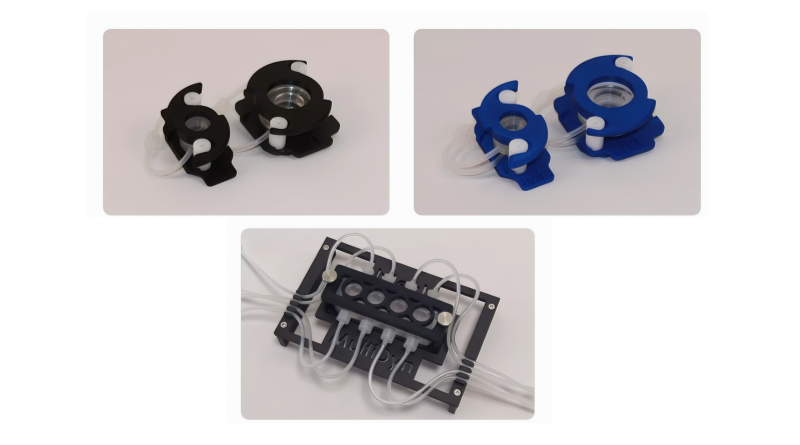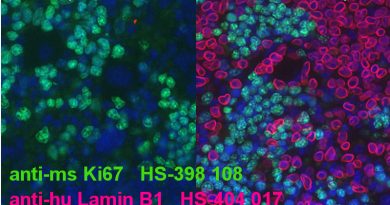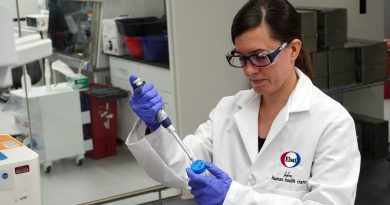Bioreactors for Dynamic In Vitro Models
IVTech has developed a groundbreaking range of bioreactors for dynamic in vitro models that transcend traditional cell culture limitations to significantly improve the depth and reliability of preclinical data.
The cutting-edge LiveBox1, LiveBox2 and MultiDyn bioreactors are developed specifically to enhance the predictability of in vitro models, crucial for simulating human pato-physiological conditions and drug interactions in preclinical studies and drug discovery. The systems support standard cell culture protocols whilst empowering researchers to create dynamic 5D in vitro models with unprecedented levels of accuracy, control and real-time monitoring capabilities, accelerating the development and evaluation of new therapeutics.
Bioreactors for Dynamic In Vitro Models
IVTech’s bioreactors are effective with a variety of cell cultures, including 2D and 3D configurations, bioprinted tissues, and both floating and attached spheroids or organoids, as well as animal and human tissue biopsies. This adaptability allows researchers to accurately assess the impact of pharmaceuticals on specific biological targets and their related tissues, enhancing the predictability of in vitro models. Additionally, the bioreactors are designed to accommodate the addition of biological circulating components, such as lymphocytes, into the culture environment, to create groundbreaking 5D in vitro models, further amplifying the capability to emulate human-specific biological responses and advancing their utility in preclinical drug research, evaluation, and precision medicine.
Bioreactor for Real-Time Monitoring of Dynamic In Vitro Models
LiveBox1 (LB1) is a cutting-edge transparent bioreactor designed to elevate cell culture experiments to new heights, whilst seamlessly integrating into existing laboratory workflows. This bioreactor allows researchers to create 2D or 3D dynamic in vitro models in attached cell culture conditions, adhering to standard protocols. Its integration with single slots of a -6, -12, -24 multiwell plate makes it an essential addition to any laboratory setup.

The transparent design of LB1 facilitates real-time monitoring of cell behaviour, interactions, and the formation of multicellular structures using standard microscope statives, slides, and plate readers. This feature allows for timely intervention during experiments, pivotal for researchers aiming to replicate human physiological conditions in vitro. Researchers can explore a wide spectrum of tissue types, including but not limited to trabecular meshwork, liver, breast tissue, stomach, ovarian tissue, and even complex systems like the central nervous system (CNS).
The LiveBox1’s design, ensures that the dynamic cellular environment is maintained, mirroring the human body’s internal milieu. This helps in generating reliable and reproducible results that are predictive of human reality. This high-fidelity simulation is instrumental for researchers conducting comprehensive studies on drug efficacy, toxicity, and the underlying mechanisms of diseases.
The LB1 also allows easy collection of samples during the experiment, due to 3-way valves and the use of the specially designed “Interaction module”. Moreover, at the end of a test, the recollection of biological samples is allowed by removing the support where the cells are attached, such as a glass disc. This feature simplifies sample handling and minimises contamination risks. The chamber’s design supports sterilisation and reuse of up to 10 times, promoting sustainability and cost-effectiveness in research.
Mimicking Patho-physiological Barriers Under Dynamic Conditions
LiveBox2 (LB2) is a transparent bioreactor engineered to simulate patho-physiological barriers under dynamic conditions. This bioreactor excels in creating air-liquid (ALI) and liquid-liquid (LLI) interfaces, providing unmatched versatility for various research applications.

LB2 is compatible with standard transwell cell seeding area, aiding in the development of sophisticated cell cultures, but maintaining the standard cell culture protocols. The Interaction module add-on allows direct access to the chamber’s wet volume and direct tissue interaction, enhancing experimental flexibility and enabling a wide range of studies. The unique sigmoidal flow configuration of LB2 also supports spheroids in floating conditions and enables forced perfusion conditions.
The LB2 is particularly effective for research involving the kidney, blood-brain barrier and central nervous system (CNS), skin, fat tissue, intestine, bone, nail, and lung. This versatility makes it an invaluable tool for researchers focusing on these specific tissues, providing a dynamic environment that closely mimics the in vivo conditions. The transparency of LB2 enables visual monitoring of the cultures, allowing the user to check the topology of the cells.
All these features ensure that the tissues can be studied under conditions that reflect their natural state, thereby enhancing the relevance and predictability of drug discovery and preclinical studies.
LB2 can be interconnected with other LiveBox chambers following a modular approach, allowing researchers to mimic the crosstalk between different tissues, and providing a more comprehensive understanding of multi-tissue interactions. LB2 is designed to be autoclavable and reusable, ensuring cost-effectiveness and sustainability in research.
Compact Multi-Dynamic Chambers
MultiDyn (MD) features a compact rack of multi-dynamic chambers that aligns with the dimensions of a standard 24-well plate. Each transparent chamber can be independently perfused, allowing the development of four parallel dynamic models simultaneously, with each well replicating the cell seeding area of a standard 24-well plate slot.

The semi-disposable nature of MD, which allows for up to three sterilisations with ethanol and UV exposure, is complemented by a clamp system and a plate that enhances compatibility with the LiveFlow system. The MD is fully compatible with standard monitoring and cell culture protocols, ensuring seamless integration with automated plate readers and established laboratory practices. It is also designed to be compatible with the protocols developed for IVTech’s LiveBox1, allowing for a cohesive and integrated approach to cell culture. The transparency of MD enables real-time monitoring through an inverted microscope, providing researchers with immediate insights into cell behaviour.
The MD’s modular design allows researchers to connect different MD racks in a Lego-like strategy to create a customised fluidic platform with several chambers connected in series. This setup not only provides for four replicates of a multi-organ model but also enables each well to simulate a different tissue type. The interconnected nature of the chambers facilitates a natural cross-modulation response to stimuli, closely mimicking the interplay between different tissues in the body. This feature is particularly beneficial for studies that require a holistic view of organ interactions, making MD an invaluable asset for complex drug discovery and disease mechanism research.





